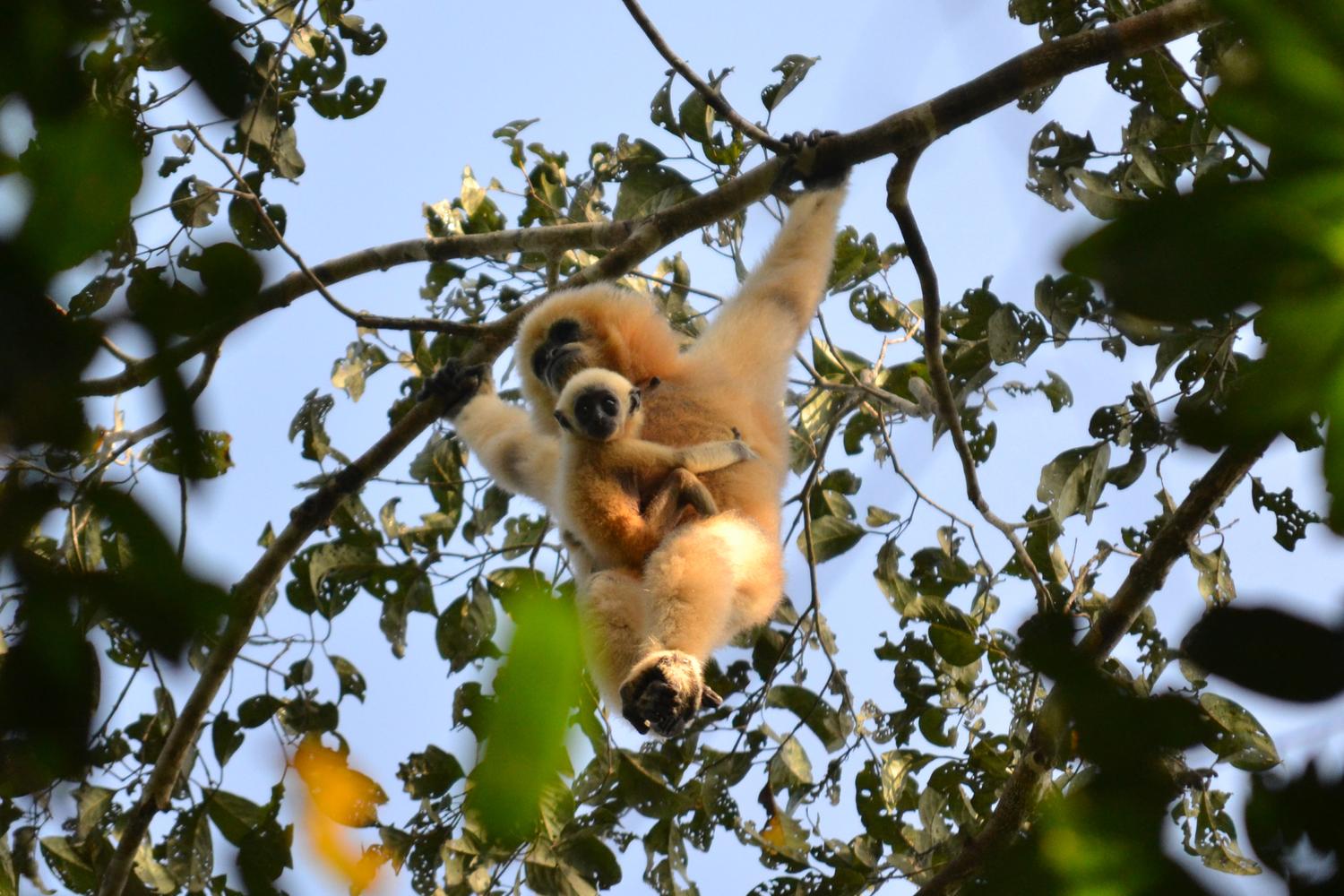By Kiley Price
January 21, 2021
Notes from the field: For communities, conservation brings business opportunities
7 min
Things might look a little different around here... Welcome to Conservation International’s new digital presence.

By Kiley Price
January 21, 2021
7 min
Though news headlines about the state of the planet may seem bleak, they don’t always capture the whole story. Right now, around the world, the work of protecting nature and the climate is happening in the field — and achieving small triumphs that don’t make the news.
Here are three recent conservation success stories you should know about.
After water, tea is the most consumed beverage around the world.
From China to South America, the global tea market nets billions of dollars each year — and women are the backbone of it, according to Conservation International Peru’s Cecilia Gutierrez.
“When it comes to tea production, women in many countries often take on some of the most arduous work, hand-clipping and picking tea leaves on hillsides for hours a day,” said Gutierrez. “However, tea workers often do not own the land and resources they manage — which leaves it vulnerable to deforestation and erosion.”
In Peru’s Alto Mayo forest, Conservation International is working with the Indigenous Awajún women to change that.
In 2015, part of the Awajún’s communal forest was turned over to 70 women in the community who wanted to protect and recover medicinal plants their ancestors had cultivated for healing and cultural purposes.
Since then, the Awajún women have recovered 100 varieties of medicinal plants and 39 species of cassava within the almost 9 hectares (22 acres) of land, now known as the “Nuwa Forest.”
For the past three years, these Indigenous women have transformed two of the medicinal plants into herbal teas that can be sold to support the preservation of their forest and cultural heritage.
In partnership with the non-profit Takiwasi Center, and with funding from Fondation Ensemble, Conservation International worked alongside the women, providing technical assistance and guidance that helped their teas reach specialty markets in Peru. In December 2020, their brand Nuwa Infusions — made with Amazonian plants such as ginger, vanilla and golden berries — went on sale at a national level.
“The Awajún women are building their business, management and financial skills,” said Gutierrez, who helps manage the program. “This process has empowered this extraordinary group of women, who are turning their traditional knowledge into a source of income that helps conserve their forests and support their families.”
The forests of northeast Cambodia provide habitat for a trove of unique wildlife, from rare clouded leopards to the largest population of endangered yellow cheeked gibbons on the planet.
However, increased development, illegal logging and wildlife poaching threaten this landscape — and the many species it supports.
In partnership with Conservation International, Cambodia’s Ministry of Environment and local communities helped protect these forests by establishing the 57,500-hectare (136,000-acre) Veun Sai-Siem Pang National Park in 2016.
Over the past five years, this partnership has provided rangers with training on software that allows them to evaluate and improve their monitoring efforts throughout the park. Using smart phones, the rangers can share what they see on patrol in real-time.
“Increasing law enforcement in the park has protected critical wildlife habitats, allowing gibbon populations and a variety of other species in the area to thrive in a stable environment,” said Conservation International’s Naven Hon, who manages the project. “We've already begun to see noticeable reductions in poaching and illegal logging.”
Additionally, Conservation International helped create Cambodia’s first gibbon-focused, community-based ecotourism program. In the past three years, nearly 200 tourists have visited this site, generating US$ 15,800 in total revenue that directly benefited 32 local tourism operators and funded community development work in the park’s three surrounding villages.
“This project shows that protecting nature has more long-term benefits than destroying it,” said Naven. “Our law enforcement practices are helping to build ecotourism — which, in turn, provides livelihoods for local communities. It’s a virtuous circle that benefits nature and the people who rely on it.”
This project is co-funded by Arcus Foundation and IUCN Save Our Species. The contents of this article are the sole responsibility of Conservation International and do not necessarily reflect the views of IUCN.
The high-altitude grasslands of the Chingaza-Sumapaz-Guerrero region in Colombia provide 70 percent of Bogota’s water.
However, as climate change accelerates, this montane ecosystem of páramos is drying up, putting city residents and rural farmers at risk.
In 2015, Conservation International partnered with 63 farming families in this region to help determine how the climate crisis will transform their land — and find innovative ways to adapt.
During the first phase of the project, scientists studied the area’s vegetation, soil use, rainfall and biodiversity, and built models to predict how these conditions could change as temperatures increase over the next century.
With this information, the farmers were able to implement new strategies to prevent soil erosion, limit pest outbreaks and promote crop growth. These methods included creating beekeeping projects to promote pollination, improving irrigation systems, using organic fertilizer and developing a community climate monitoring program to track changes in real-time.
Along with revitalizing the ecosystem, the project has provided farmers with new sources of revenue through the sale of honey, yogurt and vegetables.
“This initiative has strengthened community ties, empowered women in farming families, improved food security and recovered traditional customs,” said Conservation International’s Patricia Bejarano, who manages the program. “Now that we have demonstrated this project’s success, we plan to replicate it across the 36 páramos of Colombia.”
Kiley Price is a staff writer at Conservation International. Want to read more stories like this? Sign up for email updates here. Donate to Conservation International here.
Cover image: A baby gibbon and its mother in Veun Sai, Cambodia (© Santiago Cassalett)
Further reading: